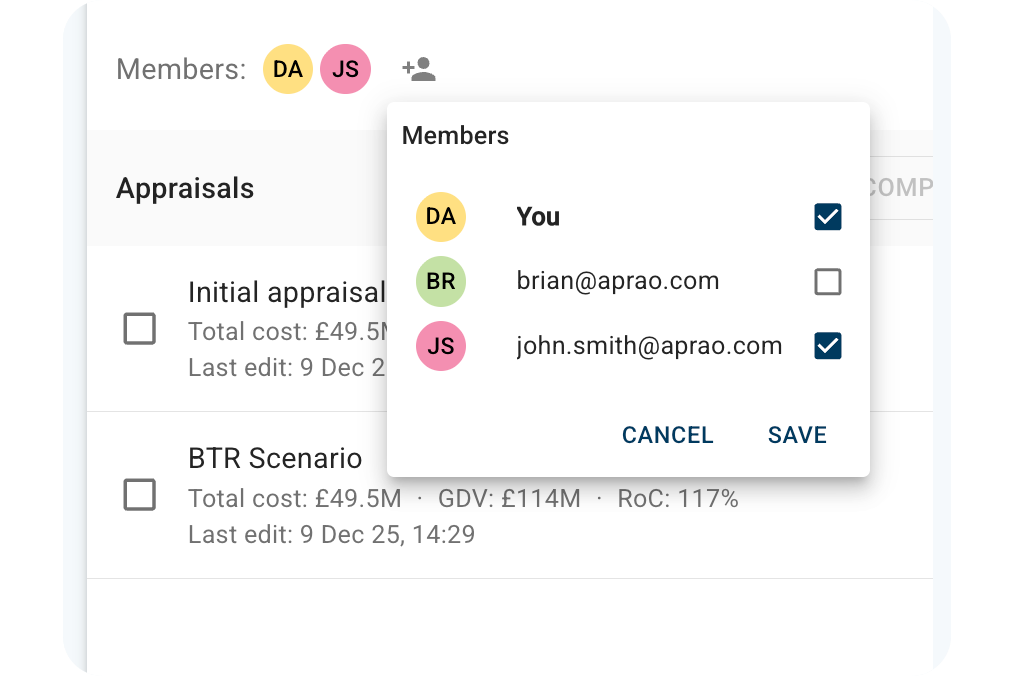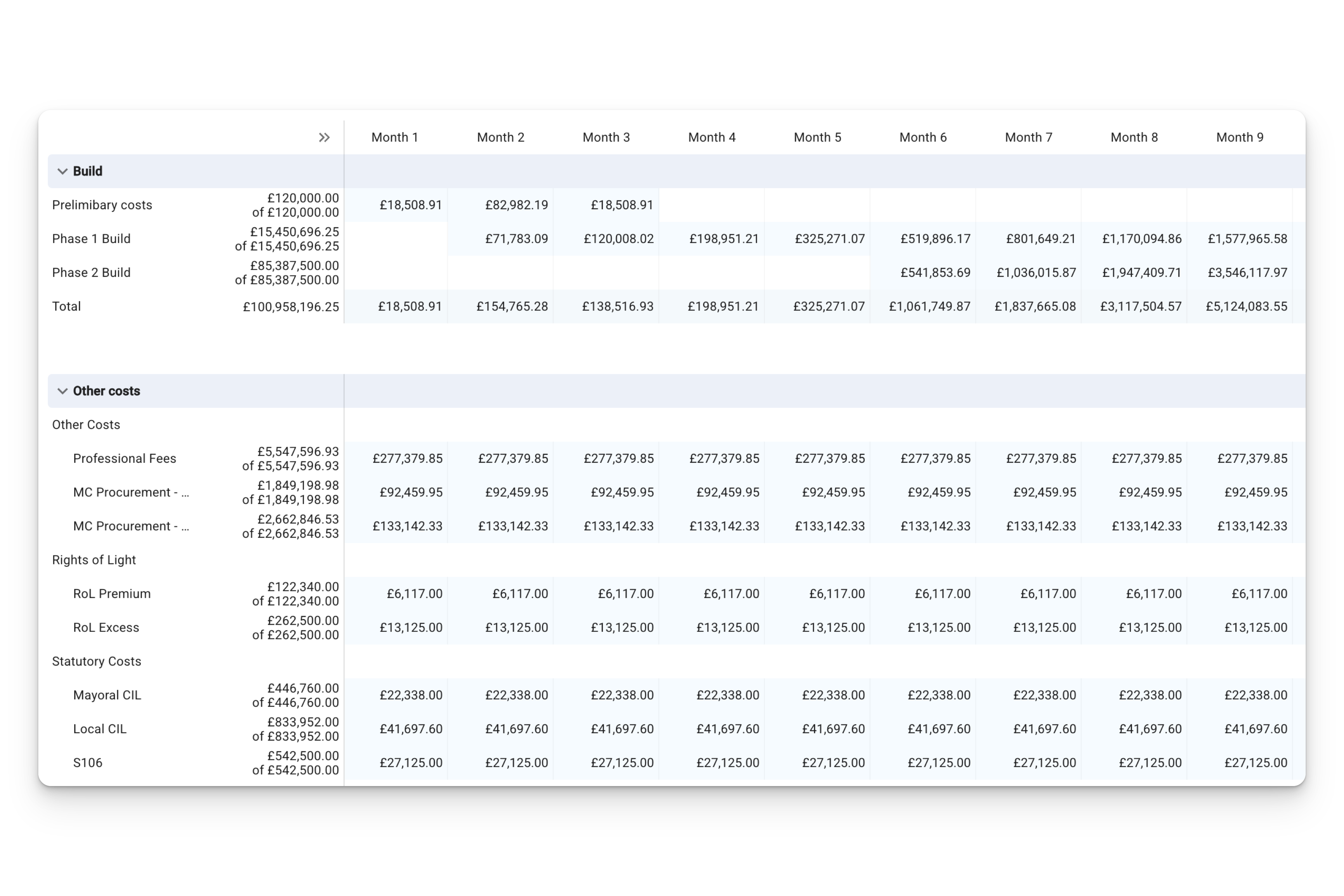Senior debt is an extremely important element of property development finance, and there can often be a lot of steps to follow to get your calculations right! But don't worry, in this piece we explain how it works and how it compares to other development finance methods. We also walk you step-by-step through Aprao, to show you how simply you can incorporate senior debt calculations into your development appraisal.
What is senior debt?
Senior debt forms the largest aspect of development finance. It is usually lent by banks and development finance lending institutions. For instance, it can be typically between 70%-90% of costs, or up to 60% of the Gross Development Value.
Why do you need senior debt?
Often, developers may not have the full amount of capital required for their development projects. Senior debt essentially serves as a loan borrowed by developers to fund their projects. Even if a developer has enough cash in hand, using debt can allow the developer to commit to more projects simultaneously by deploying less of their own money in each project. It also allows them to opt for larger-scale projects and generally improve return on equity.
How does it compare to other development financing methods?
It is the most conventional type of property development loan. It takes up the largest portion of your total financing of a project. ‘Senior’ means that the debt holder is first in line to claim the repayment and interests from whatever money is left over after all the costs and expenses. As the senior debt holder has the first position claim, such investment is considered relatively low risk. Hence, the interest rate required by the lender is often the lowest compared to other financing methods, making it one of the cheapest forms of development finance.
How does senior debt work?
The lender loans the money at a fixed interest rate, on a fixed period agreed by the borrower and the lender. However, the borrower does not get the full lump sum of the loan right on day one. As the interest of senior debt is typically calculated on the drawn balance instead of the full loan amount, it’s better for the borrower to draw the balance when they need it during different phases. Therefore the balance is used once it is drawn, and the borrower only pays interest for the money they have actually used. Hence, the loan will be structured so that money is released at the agreed stages in the process.
Concerning interest payment, retained interest is the most common way that senior debt lenders operate. Retained interest is where the lender will calculate the interest cost at the beginning of the project and hold back (retain) the interest amount from the loan. This results in a lower net loan because the interest amount is deducted from the gross loan to cover interest payments throughout the project.
How do I know the amount that I will need to draw each month during the development period? This is when a development appraisal and cash flow come into play.
How is a senior loan incorporated into a development appraisal?
Traditionally, a development appraisal can be done on a spreadsheet. However, incorporating one or more financing methods with different structures requires manual input of formulas, formatting and a good level of spreadsheet modelling knowledge. In this section, we will show you how Aprao can replace this complex process with a simple tool.
- The development appraisal in Aprao includes a ‘Finance’ tab, which allows you to incorporate various development financing into your financial model. After inputting your estimated revenues and costs of your project, your initial finance cost and total borrowing would be zero, as no debt is being incorporated initially.
- To incorporate a senior loan, click ‘add interest lender’ and name it, for example, ‘senior debt’. You can then enter an estimated loan amount. It can be a pre-determined amount, or it can be a percentage of cost or GDV. Let’s assume 70% of the cost in this example.
- Go to the interest section and choose ‘interest on drawn balance’ as you are most likely not to draw all the balance on day one. Let’s assume a 5% interest rate and a 12-month development period. Even if you only have an estimated development period but not a cash flow model, Aprao automatically applies an s-curve to the project’s construction phase to calculate the estimated drawn balance throughout the period and its total interest.
- Now, go back to ‘Payout’ and choose ‘retained’ for the type of interest as it is the most common way that senior debt operates. You will then see that there is an orange outline highlighting the ‘interest allowance’. According to the calculated total interest you just got in the previous step, enter an amount of allowance that can cover that calculated interest. After that, the ‘available balance’ will show the lowered net loan amount compared to ‘total facility’, which is the gross loan amount.
- Finally, include other fees as specified by the lenders into the appraisal. In this example, we assume a 1% commitment fee and a 1% exit fee.
-
You can now collapse the senior debt card and review the finance summary. You will see that the developers equity has dropped to reflect the loan amount. Additionally, you can immediately see the effect on the key metrics. The costs of the debt will negatively impact RoC and RoGDV depending on the interest costs. However, it will have a positive effect on the Return on Equity.
Where can you find a senior debt provider and how can you get the best deal?
A robust development appraisal is the foundation of getting development finance
– Daniel Norman, CEO Aprao // 10 years of development finance experience
A robust and concise development appraisal allows the lenders to better assess your project, which increases the speed of the application and the chance of a successful application. Building trust and relationships with reputable lenders is key to developing your property development business in the long run. Aprao is a well-known development appraisal software used by notable lenders across the UK, including LendWell and United Trust Bank.
Check out our ‘Learning from Lenders’ video series to listen to what lenders are really looking for when assessing deals and what they think about Aprao.
Other than directly approaching lenders and development finance consultants, online platforms such as Native Finance, Findango Loans, and Brick Flow are popular options for borrowers who opt for tech-enabled solutions to source deals from multiple development finance providers.
Curious to see how much time you can save when running appraisals with Aprao? Get started for free, no credit card required, and find out for yourself.
.png)






Leave a comment